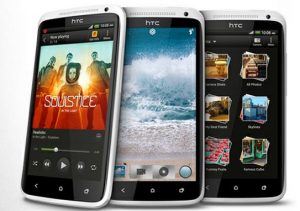
Another day, another tech product launch, and all those numbers that go with it. We just love numbers, don’t we? And generally the bigger the better. (Except in cases where they’re supposed to be small, obviously.)
The numbers in hardware and software specs are useful tools, and it’s true that bigger numbers are often better. But those same numbers carry hidden dangers, too, and, like a burger that’s too big to be good for you, that extra dollop of cream on your cake -- or the Italian town of San Gimignano, where each family just had to build a tower taller than all the others - we can become addicted to the figures without thinking about what they all really means. So let’s not blindly give every latest marketing prophet his profit, but consider our own health first.
Look Before You Leap
Not all changes for the bigger and the faster do what you think. Sometimes you need to look hard at what you really want. What am I on about? Let me start with a few examples from the field I know best, video and audio technology.
I’ve recently written a couple of articles about the Samsung Galaxy S III, which packs an enormous amount of power and capability into a small package -- and I’m still very pleased with mine, a month on. It’s an amazingly capable device. Considering what it is.
For example, it has an 8-megapixel camera. My nearly 7-year-old Nikon D70s only has a 6 megapixel sensor. Yet for serious use, the Galaxy, good though it is, doesn’t begin to rival the Nikon in terms of real sharpness and general image quality. Because the megapixel number is only part of the story. Much more important are the quality of sensor chip and lens. (Also, in this case, the compression used to store the images.)
Another story to show the importance of lenses: a few years ago I made a number of television programmes using a Sony DSR570 camcorder, which then cost around $12,000 with a lens. The budget made it worthwhile buying the camera, but rather than use the lens that came with it, we threw it away and bought a better one for around $20,000. All the electronic bits of the camera were amazing, but there’s nothing to beat old-fashioned physical engineering for a good lens. That doesn’t come cheap, and, unlike most things to do with electronics, isn’t really getting any cheaper.
The Galaxy SIII records very useful full HD video, at 1920x1080. But, although the numbers are there, as I’ve mentioned before, it would be foolish to say that picture quality compares with dedicated devices with larger sensors and, again, better lenses.
Sound Thinking
Something that affects almost everyone: sound quality.
Nearly everything that has to do with audio seems to have incredible specs nowadays -- that is going by the numbers alone. Flat frequency response from 20Hz to 20KHz, often silly amounts of output power available. Lots of surround channels. And yet, and yet -- sound from your average computer or mobile device is not really hi-fi. Let’s be honest, often it’s rubbish.
There are two main influences here. First, and possibly most important: no matter how good your digital devices are, you still have analogue ears, and with analogue devices and transducers (such as loudspeakers, headphones and microphones) we’re back in the realm of physical engineering again. The biggest crunch point is in the conversion from analogue to digital (if you’re recording) or the other way (if you’re listening).
I was disappointed with the sound from my brand spanking new brand-name standalone CD player. All CD players are the same, right? They play digital CDs. Well obviously not. So I took the feed from the player’s digital output, which gives me the best the player was capable of -- straight from the disk with no mucking about -- and I fed this into an old DAT machine for digital to analogue conversion (DAC) and then to my hi-fi amp. The difference, playing the same disk, was like lifting a thick woollen curtain. It was like coming into the same room as the music where previously you’d been listening from the bathroom next door.
But all the numbers were exactly the same. The difference was in how well they were being manipulated.
You can now buy downloaded files of music at studio master quality -- 24Bit, 192 KHz, which is way better than CD. But what are you going to listen on? Is your hardware capable of playing them properly? You might find that your software plays the music, but dithers the recording down to something much more like CD quality (16 Bit, 44.1 KHz) in order to be able to output on your soundcard or AV receiver. The only bigger numbers that have made a difference to you here are the negative ones in your bank account once you’ve paid for these high-quality tracks.
Before Your Eyes
A lot of number-escalation goes on in everyday hardware, too, to keep us buying new stuff we don’t really need. Yes, good stuff is getting less expensive, but I’m not sure of the real benefit of a full HD 1920 x 1080 display on a 15-inch laptop screen (I have one). Pictures and HD movies look great, of course. And program icons are pin-sharp, even through a microscope you’ll need to identify them. And lower-resolution pictures can look worse on such a display, because you have to blow them up to get them full screen.
Superstore
It’s great to have cheap, high-capacity hard drives, but do we need them? Although I fill up terabytes with video, my personal data (and I’ve kept pretty much everything for over 20 years) still fits easily on a 500MB portable drive. And if you do fill up a spanking new 3TB disk with important stuff -- well, it’s an awful lot of data to lose in one hit. Safer to use several smaller drives, I’d say.
Soaking It Up
Finally, although we seem to have given up on race to ever higher-processor clock speeds, we’ve replaced it with core competition. Again, this is all terrific to an extent; but far more influential than the number of cores, is the efficiency or otherwise of the software, which might need four cores only because it’s sloppily designed.
But that’s another story: we have increasingly faster hardware, but we still find ourselves waiting while some programs to do their thing. There’s the other meaning of SaaS -- Software as a Sponge.
You might think that the increasing use of mobile devices will encourage developers to think more efficiently, but a device with a quad-core processor and a 1280 x 720 screen (Galaxy S III, HTC One X etc) is more powerful than some current desktops, so it's more likely that the habits of efficiency that have so far been forced on mobile developers will begin to relax, and net gains for users will be much smaller and slower than you’d expect.
It’s all magic. We can do so much more stuff now, that in many ways our world really has changed completely in the last 20 years. But it’s not as simple as “newer and bigger is better”. Don’t be suckered. Think about what’s best for you. Let the corporations look after themselves. That’s all.
Photo Credit: l i g h t p o e t/Shutterstock


 Have you considered the HTC One X but found the price to be too high? The phone now is a whole lot cheaper.
Have you considered the HTC One X but found the price to be too high? The phone now is a whole lot cheaper.  It’s the end of another month and the end of another busy week of software releases. If you’ve been too caught up with other things to keep an eye on the titles that have been hitting the download servers over the past seven days, this roundup will bring you up to speed.
It’s the end of another month and the end of another busy week of software releases. If you’ve been too caught up with other things to keep an eye on the titles that have been hitting the download servers over the past seven days, this roundup will bring you up to speed.
 Google has posted
Google has posted